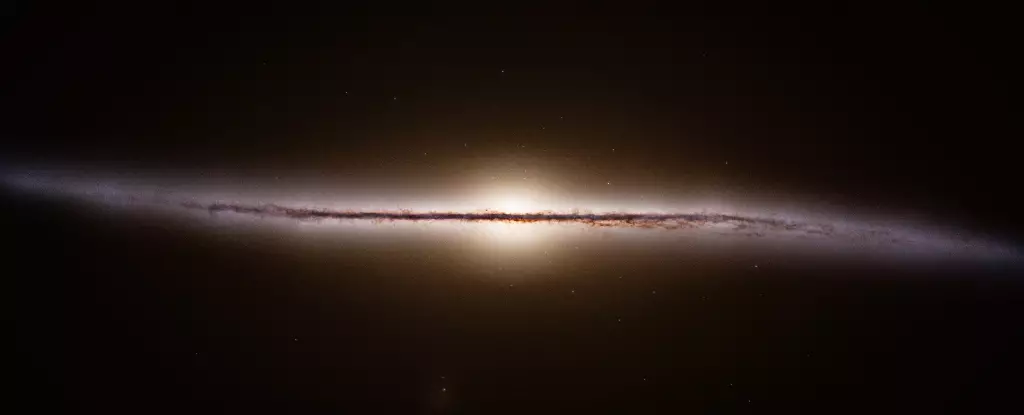The European Space Agency’s (ESA) Gaia mission stands as a monumental leap in our understanding of the Milky Way galaxy. Aimed at delivering a precise, three-dimensional map of our cosmic neighborhood, Gaia’s results have reshaped the landscape of astrophysics. Unlike previous endeavors that relied heavily on limited observations, Gaia’s comprehensive measurements—totaling around three trillion—have allowed scientists to observe the movements and positions of two billion stars over an astounding eleven-year mission. By revealing not just a static representation, Gaia has reconstructed the dynamic history of our galaxy, illustrating not only its structure but also its evolutionary narrative.
Historically, our knowledge of the Milky Way was fragmented. The advent of radio astronomy in the 1950s marked a turning point, enabling researchers to penetrate dusty cosmic regions and unveil the galaxy’s structure. Early surveys, initiated in 1952, provided tantalizing hints at the spiral arms that characterize our galaxy. Furthermore, the identification of hydrogen distributions facilitated a better understanding of galactic dynamics. What was once a theoretical model of a spiral structure now found empirical support as astronomers began to map the presence of arms and clusters within the Milky Way’s expanse.
The introduction of standard candles, like RR Lyrae and Cepheid stars, further enhanced our distance measurements and spatial understanding of the Milky Way. In the 1980s, infrared observations, particularly through NASA’s IRAS telescope, provided unprecedented access to features obscured by cosmic dust. Space missions like Hipparcos, while foundational, indicated a pressing need for a more refined tool for measuring distances and motions within the galaxy. This gap led to Gaia’s inception in 2013, designed to saturate our understanding of galactic mechanics with a precision previously thought unattainable.
One of the most astounding aspects of the Gaia mission is its ability to measure the positions and motions of stars with an accuracy that dwarfs preceding missions. The spacecraft, stationed at the second Lagrange Point (L2), has effectively acted like a cosmic observatory, providing insights without ever needing to escape the gravitational confines of our galaxy. This strategic positioning has granted astronomers unparalleled data to analyze and interpret.
The implications of Gaia’s mission extend far beyond merely mapping star locations. It has unveiled a much more intricate web of spiral arms than previously recognized, with new structures and variations indicating that the Milky Way is far more complex than a simplistic two-arm model. Some of these newly identified formations, termed “fossil arms,” could potentially hail from interactions with other galaxies in eons past, offering tantalizing clues about the galaxy’s turbulent history.
Scientific advancements often yield a wealth of visual and cultural interpretations, and Gaia is no exception. The artistic renderings based on Gaia’s data have provided the public with stunning illustrations of the Milky Way. These visuals not only captivate the imagination but also serve to contextualize the data gathered by the mission. By translating complex scientific processes into accessible imagery, Gaia has broadened public interest in galactic studies and the mysteries that lie within.
Among these depictions, the newly discerned side view of our galaxy illustrates a subtle warping of the disk, possibly caused by the influence of the Sagittarius Dwarf Spheroidal galaxy, hinting at a history of interactions and gravitational dance that shaped our current galactic structure. This revelation is not merely an astrophysical curiosity; it encapsulates the drama of cosmic evolution, deeply interwoven with our place in the universe.
Despite the mission concluding its data-gathering phase, the extraction of insights from Gaia’s findings is far from over. The anticipated release of the final data set, known as Data Release 5 (DR5), is scheduled for 2030. Given the vast repository of information Gaia has accumulated, future analyses may unearth even deeper levels of knowledge about the Milky Way’s formation, structure, and ongoing evolution.
In exploring our galaxy’s depths, Gaia has not only expanded the frontiers of our knowledge but also fundamentally transformed our perception of its complexity. As we patiently await additional discoveries from this groundbreaking mission, we are reminded that, within the seemingly ordinary, there lies an extraordinary tale waiting to be discovered—one that speaks to our limits, our past, and our cosmic future.

